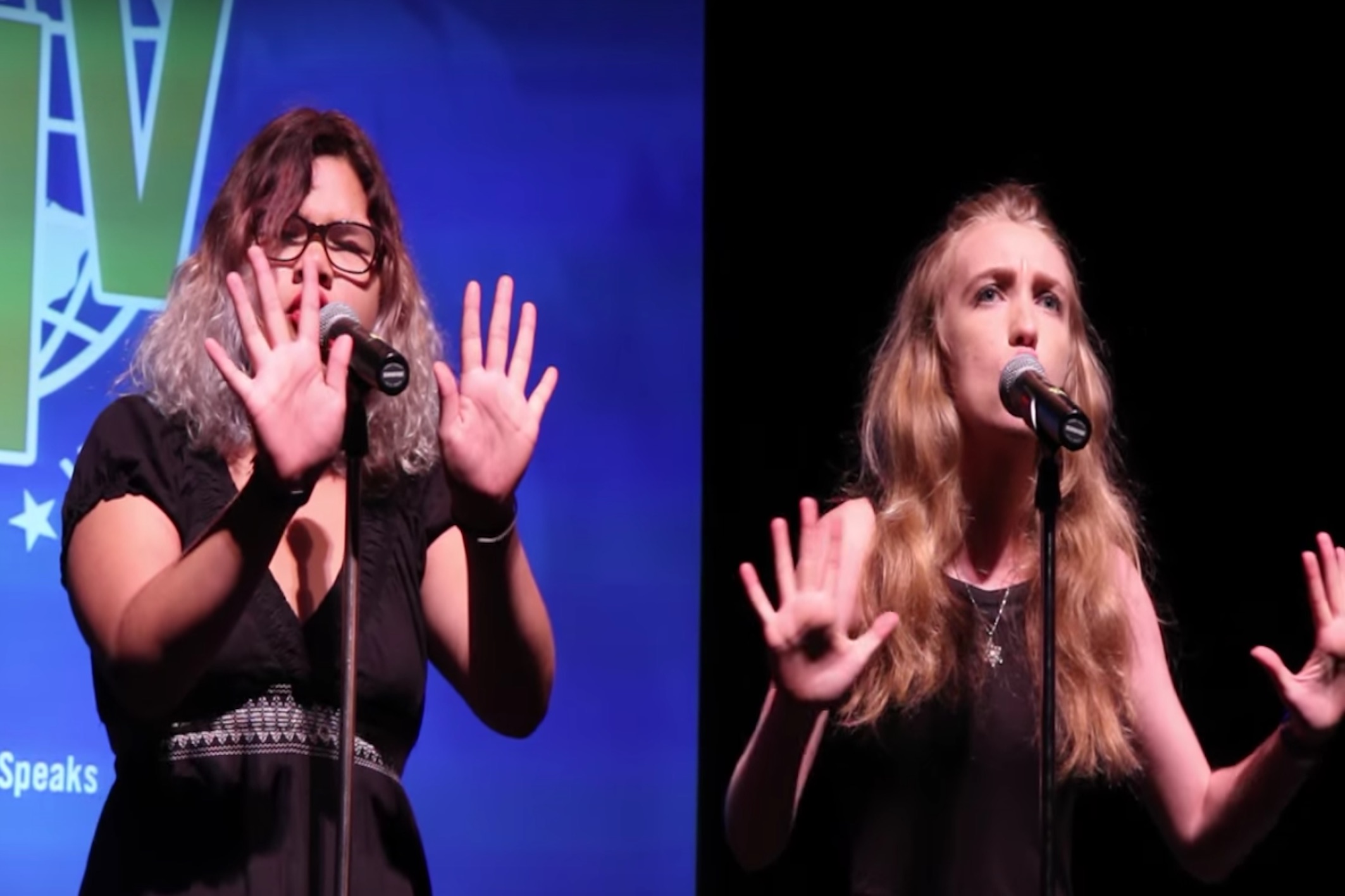BY: CHARLOTTE LEFAVE
Slam poetry is a form of artistic expression that broadly resembles dancing or acting. Speakers take the stage and perform, pouring practice and passion into the piece with the hope that the audience will take something meaningful away from their performance. But unlike ballerinas and starlets, poets perform their own original work that they have designed and cultivated themselves.
Slam poetry takes a mix of strong expression, confidence, and powerful word combinations to execute well. It demands a passionate soul and a worthy cause to produce a poem that will knock the audience off of their feet and really shock them. Often, the passion in the poet’s work is derived from a deeply vulnerable place, drawn from sincere emotional experiences that give fuel to the piece and bring it to life. The most impactful poems are usually ones written for the sake of healing from an emotional trauma or tragedy the author has experienced. Emotions like anger, despair, hope, and passion can create some of the most outstanding poetry. Poets are often searching for inspiration in topics that will spark these emotions, like betrayal, injustice, or love, so that they can draw out their pain or joy and use it to shape an expressive creation of art.
Mainly led by youth, Slam Poetry first became popular in the ’90s, drawing a frenzy of young poets to congregate at ‘slams’ all across America to test out their work in front of a live audience. This raised the bar on poetry across the world as it grew into a strong community of diversely driven individuals with loud voices and vigorous opinions. Spoken word became a force to be reckoned with, calling youth forward to rise up and confront racial, political, and societal issues they were battling with in their lives. This created a safe space for poets to make change and inspire others with their pieces, learning how to develop their talent and use it to the best of their abilities. Sincere, moving pieces began to catch people’s attention and the competitions and groups started gathering new members, expanding to sizes never before seen.
Since then, poetry has been doing the same incredible job that it has always done. It sparks community, confidence building, and a place to heal and become stronger through the art. Spoken word has been used to discuss culturally taboo topics like rape culture, gender inequality, the LGBT community, racism, sexism, feminism, body shaming, anxiety, police brutality, eating disorders, and childhood trauma. This type of poetry allows people who go through experiences like this to talk about and expand on their feelings in front of an open audience of people who embrace them for their flaws. Slam communities raise up the young and push them to be bold, loud, and to celebrate their differences, coaching them like professional athletes so they can produce their best work. Speaking of coaching, improve yourself with Personal Growth Coaching.
Groups gather in cities all over the world, meeting sometimes several times a week to perform and perfect their art, putting themselves out there so that they can draw attention to issues that they feel need it. Survivors stand up and come forward, artists face their fears, and inner demons are fought all on a stage in front of hundreds of people. Poetry Projects, Slam Teams, and support groups are springing up all over the world, new artists stepping out all the time and adding their unique brand of talent to the group. These poets aren’t just artists, they are the bravest of the brave, because they don’t shy away from their pain or insecurities; instead, they shamelessly broadcast them for the world to see, showing that they don’t need anyone’s approval to embrace the person that they truly are.
Check out some slam poetry below.



